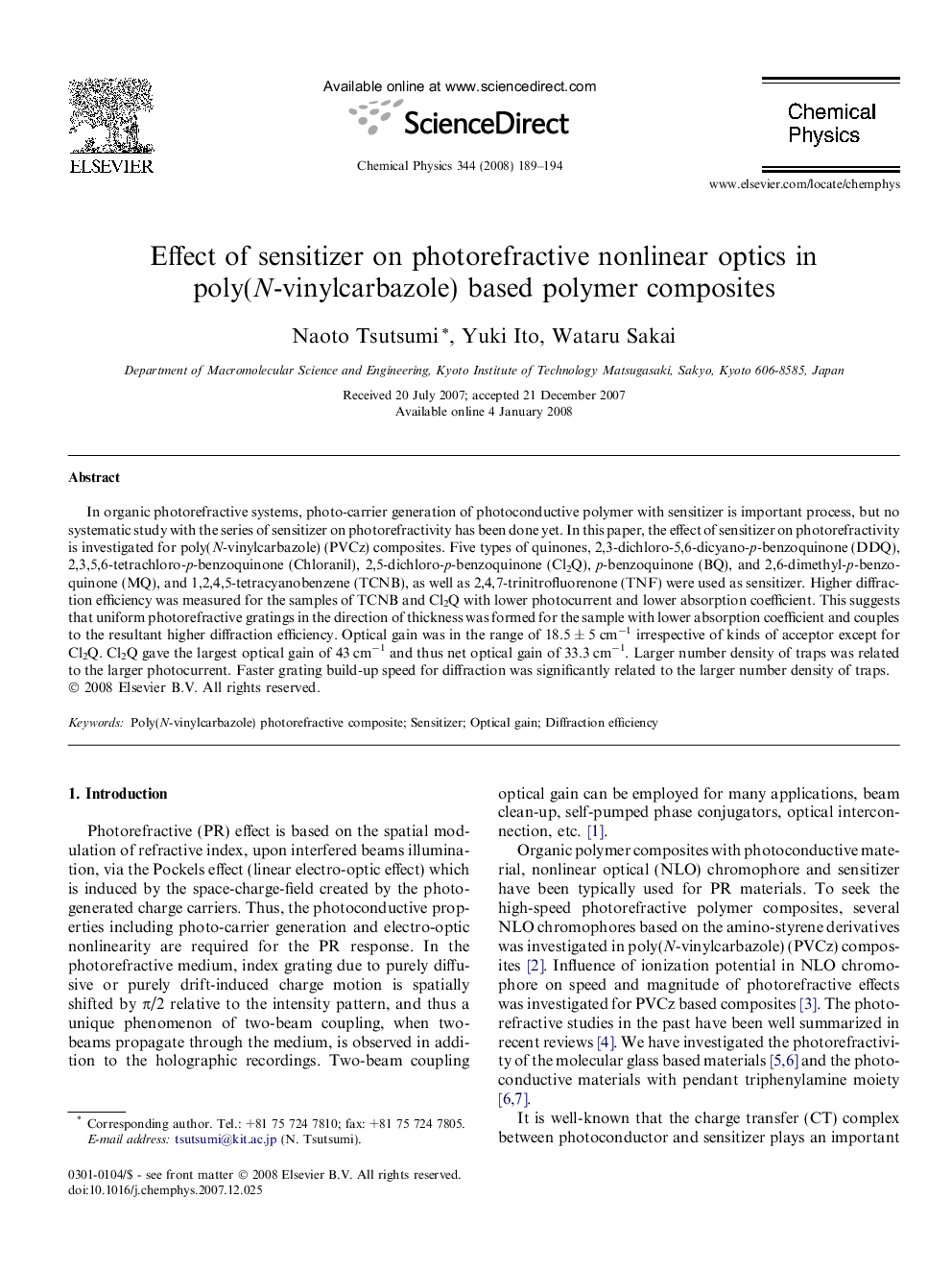| Article ID | Journal | Published Year | Pages | File Type |
|---|---|---|---|---|
| 5376226 | Chemical Physics | 2008 | 6 Pages |
Abstract
In organic photorefractive systems, photo-carrier generation of photoconductive polymer with sensitizer is important process, but no systematic study with the series of sensitizer on photorefractivity has been done yet. In this paper, the effect of sensitizer on photorefractivity is investigated for poly(N-vinylcarbazole) (PVCz) composites. Five types of quinones, 2,3-dichloro-5,6-dicyano-p-benzoquinone (DDQ), 2,3,5,6-tetrachloro-p-benzoquinone (Chloranil), 2,5-dichloro-p-benzoquinone (Cl2Q), p-benzoquinone (BQ), and 2,6-dimethyl-p-benzoquinone (MQ), and 1,2,4,5-tetracyanobenzene (TCNB), as well as 2,4,7-trinitrofluorenone (TNF) were used as sensitizer. Higher diffraction efficiency was measured for the samples of TCNB and Cl2Q with lower photocurrent and lower absorption coefficient. This suggests that uniform photorefractive gratings in the direction of thickness was formed for the sample with lower absorption coefficient and couples to the resultant higher diffraction efficiency. Optical gain was in the range of 18.5 ± 5 cmâ1 irrespective of kinds of acceptor except for Cl2Q. Cl2Q gave the largest optical gain of 43 cmâ1 and thus net optical gain of 33.3 cmâ1. Larger number density of traps was related to the larger photocurrent. Faster grating build-up speed for diffraction was significantly related to the larger number density of traps.
Related Topics
Physical Sciences and Engineering
Chemistry
Physical and Theoretical Chemistry
Authors
Naoto Tsutsumi, Yuki Ito, Wataru Sakai,
